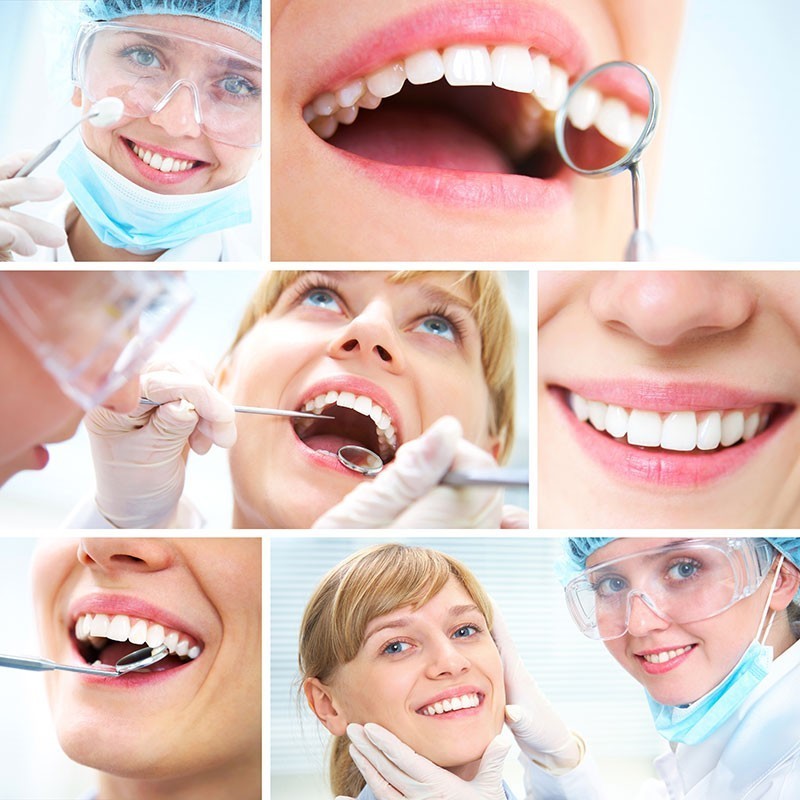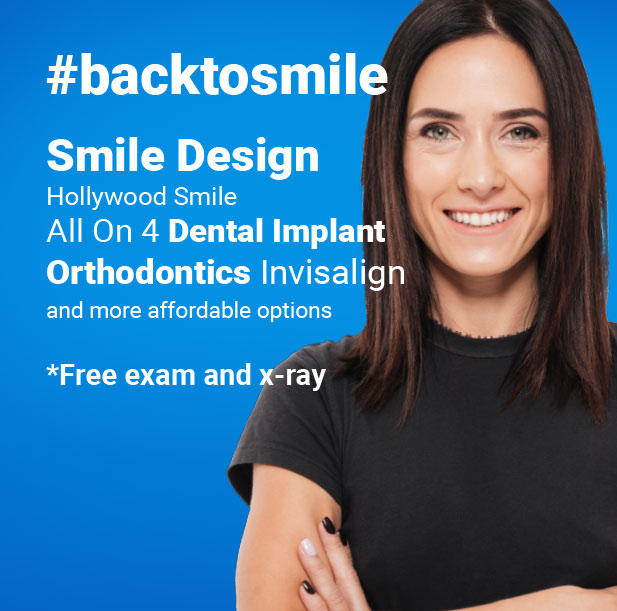Pedodontics (Ages 0-13 Pediatric Dentistry)
Tooth Eruption and Problems
Is late eruption in babies cause for concern?
Eruption of the first teeth generally starts at 6 months, however certain factors may cause delays. Delays up to the age of one are acceptable. If no teeth have erupted at the age of 1, the baby should be taken to a dentist for examination.
What symptoms are visible in the gums during eruption?
Distemper, lack of appetite, itchy gums, and an increase in saliva may occur a day or two prior to eruption. The gums where the tooth is about to erupt may be swollen. All of these complaints will cease once the teeth have erupted, and there is no medication to cure all complaints. Creams sold in pharmacies may be used before feeding in order to comfort the child.

Will the general condition of the child change during eruption?
Previously, all problems a child had when they reached eruption age would be tied to tooth eruption. While eruption may have certain effects on the child, conditions such as convulsions, diarrhea, and bronchitis are no longer connected with eruption. In order to be able to tie irregularities in a child’s general condition to eruption, all other reasons need to be analysed. It is therefore important to consult a pedodontist if such a problem is confronted.
When will the eruption be completed?
The eruption of baby teeth will be completed between the age of 24 -30 months. Completely erupted milk teeth in children consist of 20 teeth in total; 10 on the upper jaw and 10 on the lower jaw.
When do permanent teeth erupt?
At age six, permanent teeth start erupting from behind the milk teeth. These are in the form of 2 each on the upper and lower jaw on both left and right, four in total. Because they are commonly mistaken for milk teeth, they are often extracted instead of being treated when decayed. However, extraction of these teeth which are very important in the tooth system, leads to crookedness whose treatment is very difficult.
At the ages of 7-11 the milk teeth start to wobble and the permanent teeth emerge from the bottom, replacing them.
At the age of 12, the second set of permanent grinders emerge. These too do not replace the milk teeth.
What happens when a child is born with teeth?
Occasionally babies are born with teeth or their teeth may erupt immediately after birth. Extraction of these wobbly teeth may be necessary as the baby may swallow or choke on them. They may also cause irritation to the mother’s nipples during breastfeeding. In such cases, dentist intervention may be necessary.
Brushing
When should brushing of baby teeth start?
As soon as the first teeth appear in the mouth, they should start to be cleaned. By using a clean cloth or gauze, the teeth should be cleaned by wiping after breakfast and before going to sleep. Use of a toothbrush should begin after the first rear teeth start to appear.
What is the best method of brushing?
It is very difficult to suggest and enforce a brushing method to preschool children. The important thing is to make brushing a habit with them. When brushing, children generally brush the surfaces of visible or easily accessible teeth. However, germs accumulate more easily between the teeth and on the chewing surfaces. Therefore parent supervision is essential before brushing. In school age children, the toothbrush should be placed on the spot where the teeth and gums meet, at a 45º angle, and then the chewing surfaces of the teeth should be brushed by back and forth movements.
Which toothbrush should be preferred for children?
Fitting to the size of the child’s mouth, soft and nylon bristled toothbrushes should be used. Hard brushes are not advisable as they may erode the teeth. Just as a worn out broom cannot adequately clean the floors, an old toothbrush cannot clean teeth. As soon as a toothbrush’s bristles start to wear out (on average every 3 months), they must certainly be changed.
Which toothpaste should be used with children, and how much?
Toothpaste is not recommended for babies in their infancy and children up to the age of three. Use of toothpaste should start after the age of three. However, contrary to what is shown in advertisements, the amount applied onto a toothbrush should be the size of a pea, not half a finger’s length. When the toothpaste stage begins, any one of the fluoride toothpastes on the market preferred. It is imperative to remember that an effective brushing process is more important than the choice of toothpaste.
How many times a day should a child brush his/her teeth?
A three minute brushing session, once before breakfast and once before going to bed, is sufficient. Just as in many good childhood habits, the habit of brushing teeth is also acquired during childhood.
Should milk teeth be treated?
- Milk teeth, just like permanent teeth, should be treated. Having them extracted on the basis that “they’re going to be replaced, anyway!” is a notion that can lead to a number of problems. The importance of milk teeth can be emphasised as follows:
- Milk teeth play an important role in growth. Children with toothaches cannot eat properly. Similarly, children who have teeth extracted cannot eat and therefore cannot grow and develop.
- Aside from general body development, milk teeth are also necessary for the development of the jaws. Children who have teeth extracted due to cavities or gum problems may see their jaw drop and look older.
- Teeth are necessary for talking. Especially during the phase where children learn how to talk, the lack of front milk teeth may lead to the letters F, V, S, Z and T to be mispronounced, which may turn into lifetime habit.
- Every child likes to smile. Healthy teeth are needed for a nice smile.
- Looking attractive is a natural need in people of all ages. Children with decayed or missing teeth may think they look ugly, which may in turn cause psychological discomfort.
- One other function of the milk teeth is to save the place of the permanent teeth emerging from below. Imagine 10 children seated next to each other on a couch. When one of the stands up and leaves, the others reshuffle and fill his/her space to be more comfortable. If then another child comes and tries to sit amongst them, they will have to squeeze together. Similarly if a milk tooth is extracted before it is supposed to, the neighboring teeth shift towards the gap. This leaves no room for the tooth emerging from the bottom. This tooth squeezes the others, causing crooked teeth.
A Child’s First Visit to the Dentist
When should a child first be taken to the dentist?
The most ideal time for this is the six months after the first teeth emerge. Problems with a child’s teeth may start at a very early age. Obtaining information about the child’s feeding, tooth care, and sucking habits may prevent problems from happening before they start.
How should a child and a parent prepare for the first examination?
Obtaining information regarding the procedure before taking a child to the dentist is the best option. Contacting a dentist before very large cavities form and violent pains start will ensure that the treatment goes much more smoothly for both the child and the dentist. However, a child brought to the dentist’s office with the preconceived notion that an injection will not be administered, will lose all faith in both the parents and the doctor should anaesthetics need to be applied. Therefore correctly informing a child regarding treatment is important in terms of fighting their fears and re-establishing their trust.
Why do children have a fear of dentists, and what measures can be taken?
If the parents explain to the child that there is nothing to fear in dental treatment, they can easily be taken to the dentist’s office. However, some parents scare children into thinking that dentists are an matter of fear with statements like “If you don’t behave, I will take you to the dentist and he will pull your tooth out!”.
Therefore;
- Going to the dentist’s office should not carry an element of punishment. On the contrary, an atmosphere in which the child enjoys going to the dentist’s office should be created.
- Another point to be careful about is that a correlation should not be drawn between going to the dentist and the pain the child is going to be subject to. However, misleading the child with “Your tooth won’t hurt at all” will only make future treatment more difficult.
- Good dialogue between the dentist and the child will assist the child in fighting his/her fears. For this to happen, it is important that the parent allow the child to answer the dentist’s questions.
Please contact via right section form without any hesitations, in order to get optimal information.


